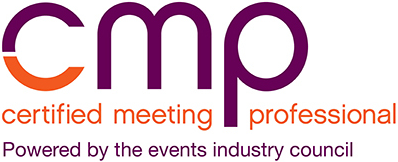Carbon Neutral Events and Carbon Offsets
![]() Print this Article | Send to Colleague
Print this Article | Send to Colleague
Many events have a goal of being carbon neutral. Realistically, all events will have a carbon footprint, so in order to achieve carbon neutrality, events need to look at ways of balancing their emissions through the use of carbon offsets. I’m often asked to weigh in on this issue and if they really are an effective tool for mitigating an event’s carbon footprint. My answer is always "yes, if..." – meaning that they can be useful, provided that a few factors are kept in mind. These factors include:
1. Are efforts being done to first reduce the amount of carbon emissions?
2. Are you able to measure your carbon emissions?
3. Are the offsets selected of high quality?
What are carbon offsets?
The David Suzuki Foundation defines a carbon offset as a credit for greenhouse gas reductions achieved by one party that can be purchased and used to compensate (offset) the emissions of another party.[1]By using carbon offsets, events can take responsibility for their carbon emissions. While reduction of emissions should be the main priority, the use of offsets can be a positive step towards carbon neutral events.
1. How to Reduce Your Emissions Before You Offset
As mentioned above, the first step in becoming carbon neutral is to reduce your emissions. Not only is this good for the environment, it is good for your financial bottom line. The less you need to offset, the less need to purchase offsets. Here are a few easy ways that you can reduce your emissions:
- Select venues with energy management programs
- Select destinations that help you reduce your transportation-related emissions with features such as proximity to your attendees, frequent direct flights, good public transportation and good "walkability" between your venue and accommodations
- Opt for low-carbon food choices, such as vegetarian options (meat and dairy have high water and carbon footprints)
- Reduce your power needs through natural lighting or simply turning off equipment when not in use
For more ideas on how to reduce your emissions, visit our sustainability resources at www.eventscouncil.org
2. Measuring Your Carbon Footprint
Before the emissions can be offset, events need to be able to measure their impact. Some practical ways of doing this include:
- First, begin by defining your scope: What do you intend to measure? Will it be your energy usage? Your food-related carbon emissions? Your travel-related emissions? From there, you can determine how you will measure your footprint.
- Many venues now offer energy usage reports. Ideally, this will be discussed as part of your RFP process. Some hotels are starting to use the Hotel Carbon Measurement Index (HCMI), a free tool developed by the International Tourism Partnership (ITP) and the World Travel and Tourism Council (WTTC). The HCMI can be used to generate reports per occupied room on a daily basis, and per area of meeting space on an hourly basis. The HCMI is available from tourismpartnership.org/carbon-emissions.
- If energy usage reports are not available, energy use can be estimated using event carbon emission calculators, such as the one from www.terrapass.com
- Calculate travel-related emissions for your attendees by using a flight or car calculator, such as the one from www.offfsetters.ca.
3. Selecting High-Quality Offsets
Not all offsets are created equal. Here are a few things you should look for in selecting offsets:
- "Additionality": Carbon offsets should be used to fund projects that otherwise wouldn’t have occurred to result in net positive benefits for the environment. As an example, funding the installation of solar panels for a greenhouse that otherwise wouldn’t have been feasible without the investment would be considered additional. Carbon offsets should not be used to fund projects that are required by government regulation, as these would not be considered additional.
- Project Type: Offsets that support renewable energy (such as wind or solar) reduce our use of fossil fuels and can have long-term benefits. Forestry-related projects, such as tree-planting or protecting an area from logging can be problematic as it can take several years for the trees to reach their potential for carbon storage, are at risk from forest fires, and can result in logging simply moving to another area. For a comprehensive review of pros and cons of various carbon offset project types, see Purchasing Carbon Offsets: A Guide for Canadian Consumers, Businesses, and Organizations available from: http://www.davidsuzuki.org/publications/resources/2009/purchasing-carbon-offsets/
- Certification: Look for offsets that have been verified by a third party. Examples include The Gold Standard: www.goldstandard.org, VCS: www.v-c-s.org and Green-e: www.green-e.org.
- Offsets vs. Renewable Energy Certificates: Both carbon offsets and renewable energy certificates (RECs, also known as renewable energy credits, green tags or green certificates) are tools to help us to improve environmental impact, though they represent different ways of doing so. Carbon offsets address greenhouse gas emission reductions, as measured in tonnes of carbon dioxide equivalents (CO2e), while RECs represent electricity production, as measured in MWh of electricity produced from renewable energy resources.
In summary, carbon offsets can be a great tool for helping events to take responsibility for carbon emissions. Just remember to reduce first, then measure, then offset.
Mariela McIlwraith, CMP, CMM, MBA
Director of Sustainability, Events Industry Council

[1] David Suzuki Foundation, Carbon Offsets http://www.davidsuzuki.org/issues/climate-change/science/climate-change-basics/carbon-offsets/

